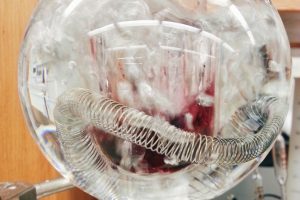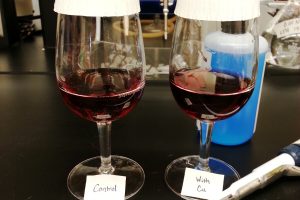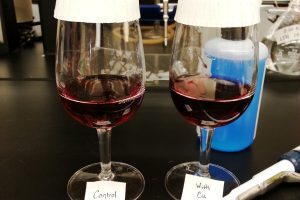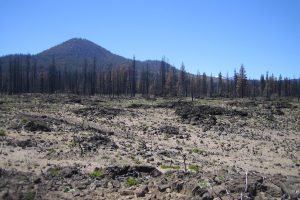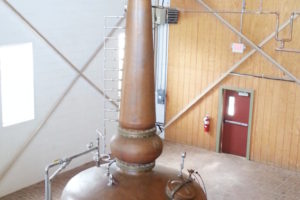Webinar Curriculum: Why measuring volatile acidity (VA) is important. (Hint: Winemakers cannot taste it before it becomes a problem.) The parts of the cash still. How to run the cash still apparatus. How to measure the results from the titrations. A copy of the Volatile Acidity (VA) Analysis Protocol. Action items for winemakers to get […]
Wine Faults
Production Guide: Reducing Copper in Copper Sulfate Treated Wines
Why is this important? Per 27 CFR 24, wineries are allowed to add up to 6.0 mg/L (ppm) of copper to a wine while in production. In a TTB regulation update, the residual copper concentration must “not exceed” 1.0 mg/L (ppm). However, the DG Winemaking recommends keeping residual copper concentrations below 0.5 mg/L […]
Production Guide: Remediating Hydrogen Sulfide and Reduction in Wine
Why is this important? Hydrogen sulfide (H2S) and several aromatic compounds (i.e., mercaptans or thiols, disulfides) can contribute to an undesirable, “reduced” off-aroma in wine. Some of these aromatic components are treatable using common remediation techniques. However, the presence of disulfides may be more difficult to treat. Record Keeping Recommendations During primary fermentation, measuring yeast […]
Production Guide: Smoke Taint Remediation
How Wines Become Smoke Tainted When smoke lingers over a vineyard site, the smoke carries aromatic volatile phenol compounds, including guaiacol, 4-methylguaiacol, o-cresol, p-cresol, and m-cresol (AWRI Jan. 2021). These aromatic compounds can potentially get absorbed by both the vine leaves and fruit at any stage of growth. The onset of veraison and post-veraison tend […]
Distilling Flawed Wines
Webinar Curriculum: Distillation as an option for flawed wines What is a wine flaw? Which wine flaws are typically retained in the distillate Action steps for winemakers if they are considering distillation as a remediation technique for flawed wines. Video length: 30 minutes
Q&A Summary: February 2020
Topics Covered:Tank headspaceUsing carbon dioxide gasCold stabilizationUsing an ebulliometerMeasuring sugar in wineCold stabilizationWhen to sweeten a wineGasketsOzoneLab testingFDA and FSMA I only have a few inches of headspace in my fixed capacity tanks. There is a little bit of headspace for when the volume within my tanks expands as the cellar temperature rises. I noticed […]
